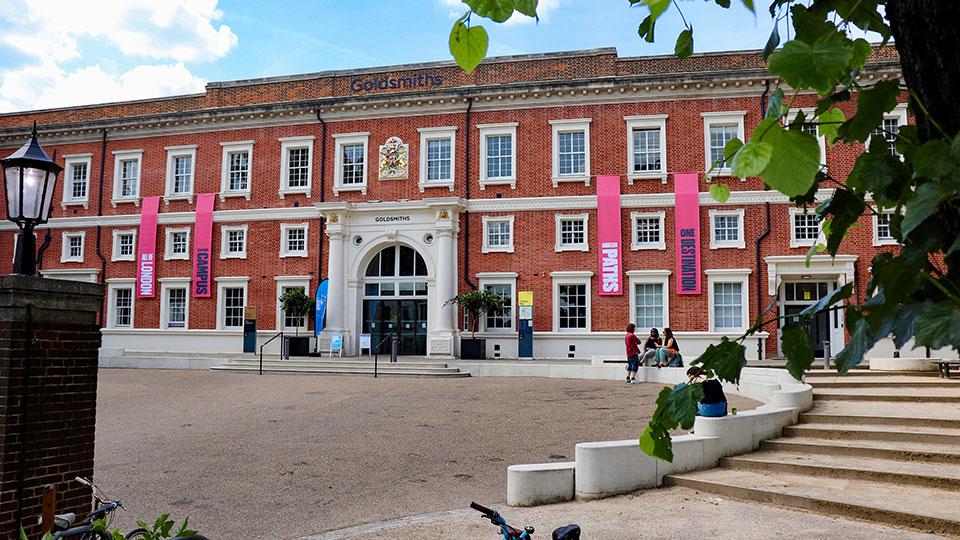MA
Luxury Brand Management
Content navigation menu
Why study MA Luxury Brand Management at Goldsmiths
This Masters equips you with the management, entrepreneurial, marketing and professional skills to work in the luxury goods and experiential luxury industry.
- The luxury brands sector encompasses the fashion and retail industry, as well as sectors such as tourism, hospitality, food and beverage, film, digital media, dance, music and theatre. This MA debates the concept of luxury in a historical and cross-cultural context, and offers a strong academic underpinning on theories of luxury and consumption.
- You will explore the role of luxury in conserving traditional arts, especially with regard to Europe, Asia, Africa and the Americas.
- The programme combines formal teaching with dissertation research, underpinned with visits to key luxury brand enterprises in London and elsewhere, and draws on Goldsmiths’ alumni for inspirational talks.
- The Masters offers practice-based assignments and voluntary intern opportunities in various cultural organisations and luxury corporations that have established links with Goldsmiths.
Contact the department
If you have specific questions about the degree, contact the Programme Convenor, Dr Kelly Meng Parnwell.
Length
1 year full-time or 2 years part-time
Fees
Home - full-time: £12520
Home - part-time: £6260
International - full-time: £22640
Department
What you'll study
You'll take the following compulsory modules:
| Module title | Credits |
|---|---|
| Luxury Brands: Retail, Digital and Marketing | 30 Credits |
| Luxury Brand Management | 15 Credits |
| Intellectual Property, Trademarks and Brands | 15 credits |
| Dissertation | 60 Credits |
Teaching style
Taught sessions and lectures provide overviews of themes, which students are encouraged to complement with independent research and group work for presentation and discussion with peers at seminars.
Industry speakers are invited to share their expertise and insights, bridging academic concepts with real-world applications.
Assessments build on lectures and seminars, so students are expected to attend all taught sessions, which are designed to cultivate knowledge and deepen their understanding of their chosen subject.
What our students say


Careers
This MA will provide you with the skills required to pursue a career in the luxury brand field covering a wide range of creative industries.
The programme also has a strong critical and theoretical underpinning, enabling you to write a dissertation that could serve as a stepping stone to a higher level academic study and/or careers within research or academia.
Skills
This MA will develop your skills in:
- Brand management and marketing
- Entrepreneurial and intrapreneurial skills
- Critical thinking
- Teamwork
- Presentation
Entry requirements
You should normally have (or expect to be awarded) the following qualifications:
- An undergraduate degree of at least upper second class standard or equivalent
Industry experience would also be an advantage.
Entrepreneurs or industry professionals may gain entry by prior accredited learning, subject to stringent evaluation criteria.
You might also be considered for some programmes if you aren’t a graduate or your degree is in an unrelated field, but have relevant experience and can show that you have the ability to work at postgraduate level.
International qualifications
We accept a wide range of international qualifications. Find out more about the qualifications we accept from around the world.
If English isn’t your first language, you will need an IELTS score (or equivalent English language qualification) of 6.5 with a 6.5 in writing and no element lower than 6.0 to study this programme. If you need assistance with your English language, we offer a range of courses that can help prepare you for postgraduate study.
Fees and funding
Annual tuition fees
These are the PG fees for students starting their programme in the 2024/2025 academic year.
- Home - full-time: £12520
- Home - part-time: £6260
- International - full-time: £22640
If your fees are not listed here, please check our postgraduate fees guidance or contact the Fees Office, who can also advise you about how to pay your fees.
It’s not currently possible for international students to study part-time under a student visa. If you think you might be eligible to study part-time while being on another visa type, please contact our Admissions Team for more information.
If you are looking to pay your fees please see our guide to making a payment.
Funding opportunities
Explore the Goldsmiths scholarships finder to find out what funding you may be eligible for.
If you are a UK student you may be eligible for a postgraduate loan.
Meanwhile our Careers Service can also offer advice on finding work during your studies.
Paying your fees
Find out about paying your tuition fees.
Additional costs
In addition to your tuition fees, you'll be responsible for any additional costs associated with your course, such as buying stationery and paying for photocopying. You can find out more about what you need to budget for on our study costs page.
There may also be specific additional costs associated with your programme. This can include things like paying for field trips or specialist materials for your assignments. Please check the programme specification for more information.
How to apply
You apply directly to Goldsmiths using our online application system.
To complete your application, you will need to have:
- Details of your academic qualifications
- The email address of your referee who we can request a reference from, or alternatively a copy of your academic reference
- Copies of your educational transcripts or certificates
- A personal statement. Please make sure your statement addresses the following questions:
- What is your educational/professional background and how does this relate to your decision to choose this particular MA?
- What are your expectations of this MA/what do you want to achieve through this programme?
- Why and how do you think this MA at Goldsmiths particularly aligns with your future goals and aspirations?
You'll be able to save your progress at any point and return to your application by logging in using your username/email and password.
Selection and interview process
There are no places offered on this programme by application alone. Selected applicants must attend an interview that will be arranged to suit your requirements, in person or virtually (eg Skype).
The interview will typically take about 20 minutes, and you will be asked a few questions from the programme convenor regarding your application. The interview also provides an opportunity to have a conversation about the programme, and for the two parties to get to know each other.
Further guidance
Read our guide to applying for a postgraduate degree at Goldsmiths.






